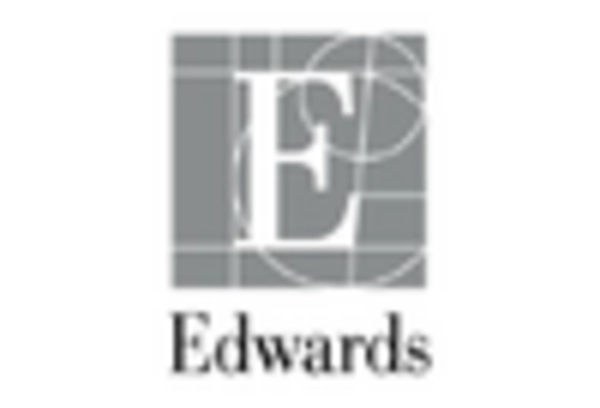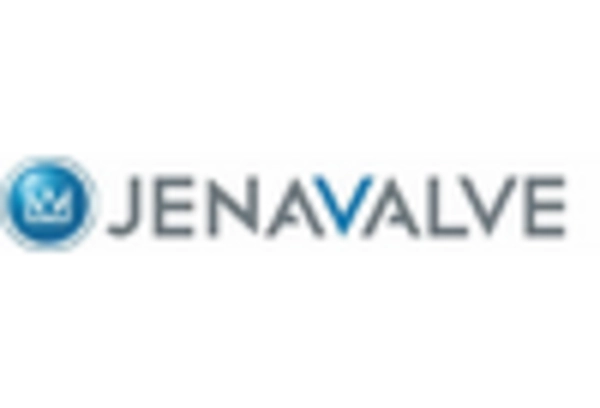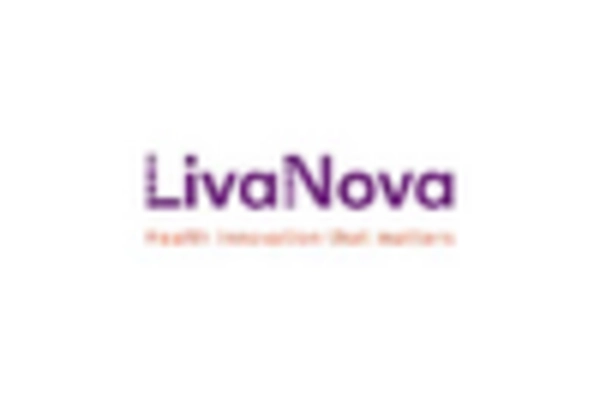Increasing Healthcare Expenditure
Rising healthcare expenditure across various regions is significantly impacting the Aortic Valve Market. As governments and private sectors allocate more resources to healthcare, there is a corresponding increase in funding for cardiovascular treatments, including aortic valve procedures. This trend is particularly evident in developed economies, where healthcare spending is projected to grow at a compound annual growth rate of 5-7% over the next few years. Enhanced funding allows for better access to advanced medical technologies and surgical procedures, which in turn drives demand for aortic valve replacements. Consequently, this increase in healthcare expenditure is expected to bolster the Aortic Valve Market.
Growing Awareness and Screening Programs
The rise in awareness regarding heart health and the implementation of screening programs are contributing to the growth of the Aortic Valve Market. Public health initiatives aimed at educating individuals about cardiovascular diseases have led to earlier diagnosis and treatment of aortic valve disorders. Screening programs, particularly for high-risk populations, are becoming more prevalent, which facilitates timely interventions. This proactive approach not only improves patient outcomes but also increases the demand for aortic valve replacements and repairs. As awareness continues to grow, it is anticipated that the Aortic Valve Market will experience sustained growth driven by early detection and treatment.
Technological Innovations in Valve Design
Technological advancements in aortic valve design and materials are transforming the Aortic Valve Market. Innovations such as transcatheter aortic valve replacement (TAVR) and bioprosthetic valves have enhanced patient outcomes and reduced recovery times. The introduction of minimally invasive techniques has broadened the patient base eligible for treatment, thereby increasing market demand. Furthermore, the development of durable and biocompatible materials is expected to improve the longevity of valve replacements, which could lead to a higher adoption rate among healthcare providers. As these technologies continue to evolve, they are likely to play a crucial role in shaping the future landscape of the Aortic Valve Market.
Rising Incidence of Aortic Valve Disorders
The increasing prevalence of aortic valve disorders, such as aortic stenosis and regurgitation, is a primary driver of the Aortic Valve Market. As populations age, the incidence of these conditions rises, leading to a greater demand for surgical interventions and valve replacements. According to recent data, aortic stenosis affects approximately 2-7% of the population over 65 years, indicating a substantial market potential. This trend is likely to continue, as the aging demographic is projected to expand significantly in the coming years. Consequently, healthcare providers are increasingly focusing on innovative treatment options, which further stimulates growth within the Aortic Valve Market.
Regulatory Support for Innovative Therapies
Regulatory bodies are increasingly supporting the development and approval of innovative therapies within the Aortic Valve Market. Streamlined approval processes for new devices and treatments are encouraging manufacturers to invest in research and development. This regulatory environment fosters innovation, leading to the introduction of advanced aortic valve solutions that meet the evolving needs of patients and healthcare providers. As a result, the market is likely to witness a surge in new product launches, which could enhance competition and drive down costs. This supportive regulatory landscape is expected to play a pivotal role in shaping the future of the Aortic Valve Market.

















Leave a Comment